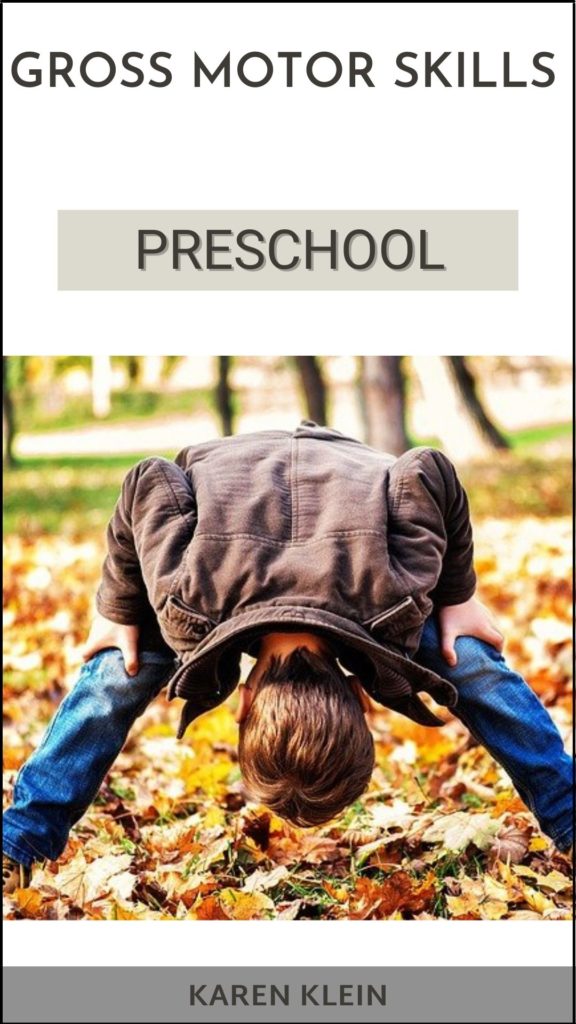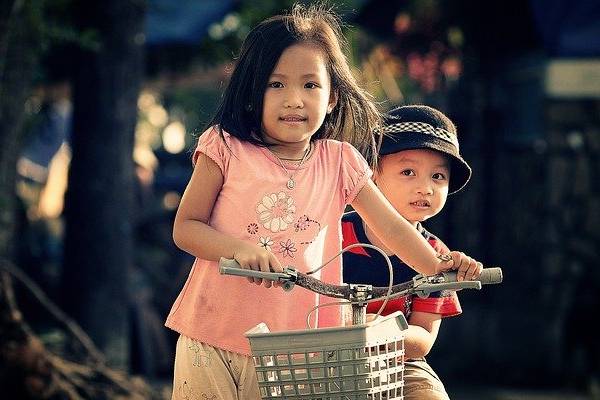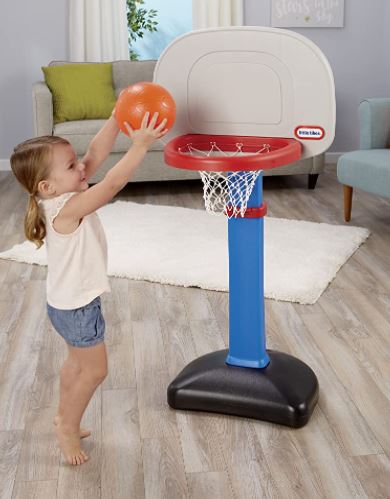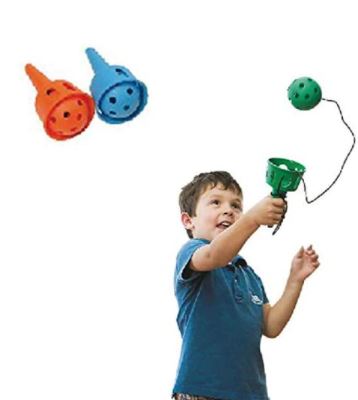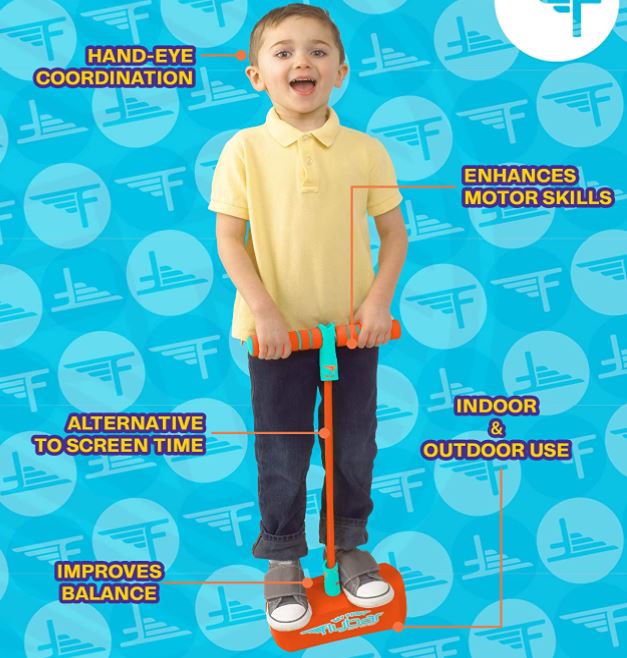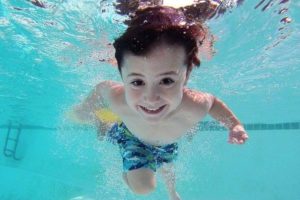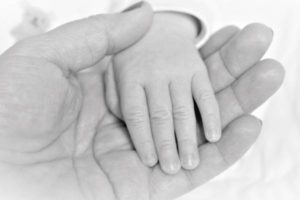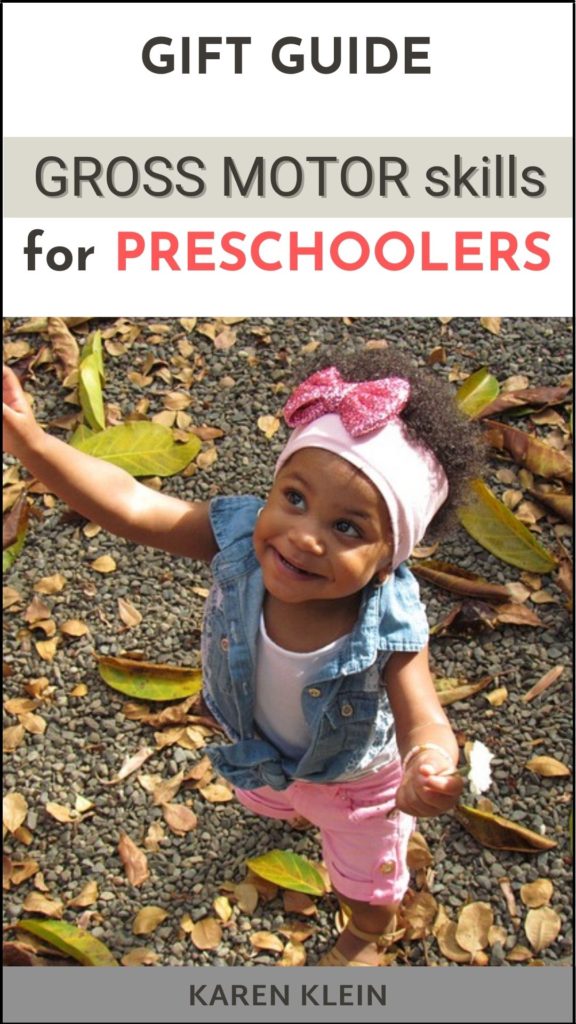
"Watching a child makes it obvious that the development of his mind comes through his movements."
Maria Montessori
Affiliate links are included to help you find the products I like easily. I receive a small commission from purchases made when following these links. To read those privacy and disclosure policies before diving into the good stuff, click here.
Gross motor skills are defined as abilities that require whole body movements and involve our largest muscles such as the arms, legs, and torso. The development of these skills is imperative to perform everyday functions such as standing, walking, running, jumping, and sitting upright at the table.
Working on gross motor skills with your preschooler helps prepare them to begin taking on self-care skills such as dressing themselves, , climbing in and out of their bed, or brushing their teeth . Working on gross motor skills also improves a child’s hand-eye coordination, which come in handy while practicing tasks such as throwing, catching, and kicking a ball, riding a bike or a scooter, and swimming.
- Working on gross motor skills helps prepare our preschoolers for a full day of school by getting them ready to sit upright at a desk, move between classrooms, and carry a heavy school bag.
- Gross motor skill development also impacts their ability to navigate new environments (e.g. walking around classroom items,, running up a sloped playground hill, or getting on and off a moving escalator).
- Without fairly developed gross motor skills, a child will begin to fall behind in completing day to day tasks such as feeding themselves , picking up toys, and successfully potty training.
Interesting Facts
- Research indicates that a child’s gross motor skills development is a major predictor of their school readiness.
- A Study found that Children who participated in 90 minutes per week of moderate to vigorous physical activity displayed improvements in working memory and academic performance.
- Crafting and art projects come a little easier to preschoolers.
- The vast amount of gross motor skill development that happens between the toddler years and preschool years plays a large role in a child’s ability to complete arts and crafts.
- Schools that have added physical activity into their curriculum show a 6% increase in student’s standardized test scores when compared to peers who had inactive lessons.
Developing gross motor skills in preschoolers is crucial to their development
Gross motor skills tend to build upon each other progressively. Learning to walk, for example allows a child to develop new skills like running and jumping.
Gross motor skills are so critical to child development because:
- They help your child gain strength and confidence in their body.
- They help your child develop a healthy lifestyle from a young age.
- They help develop your child’s ability to take on more complex skills in future activities, such as playing soccer with a team.
Gross Motor Skills Impact On Academic Skills
Students with poor gross motor development may have difficulty with activities such as writing, sitting up in an alert position, sitting erect to watch classroom activity, or writing on a blackboard. Delays in gross motor skills can lead to problems with fine motor abilities.
Writing is a fine motor skill, but many aspects of it hinge on gross motor movements. A student’s ability to maintain upper body support, for example, will affect his ability to write.
When noticing possible delays, early intervention is important because gross motor development can have a lasting impact on a child’s cognitive and motor abilities as they grow older. In one study looking at children with learning disabilities, researchers found poor gross motor skills were linked to learning lags, including problems with reading and math.
Activities that strengthen gross motor skills for preschoolers
Here are some basic fundamental movement skills that your preschooler should be learning, and mastering:
Running
By age of four, your child should be running with confidence. You want to make sure they continue to run and to develop their strength and balance, as running is essential to many sports and activities.
Throwing & catching
As so many sports and activities involve throwing and catching you really want to continue to develop your preschooler’s skills in these areas. Basic proficiency in these skills will allow your child to keep up with their peers and participate in age appropriate activities and games.
Falling & tumbling
Contrary to popular belief, learning to fall is an important skill. Kids who never learn to fall or tumble may be more prone to injury during activity because they don’t know how to tuck their head, knees, and arms as they hit the ground.
Hopping & jumping
Hopping and jumping are fundamental skills for a multitude of sports and activities ranging from dance to track and field. You might think that hopping and jumping are things that kids just do naturally, but these skills need to be practiced as much as any other movement skills to develop balance and agility.
Cycling
Riding a bike is an essential part of childhood. Learning how to properly ride a bike provides the necessary foundation for all cycling sports as it builds balance, coordination and strength on two wheels.
7 Best toys to improve gross motor skills for preschoolers
These walking cups are so much fun to use. Kids instantly gain a few inches of growth by walking and balancing on this classic gross motor toy. Agility, balance, and coordination all come together beautifully in this colorful outdoor toy! It’s great for obstacle training, outdoor activities, and lawn sports.
I remember playing with these boards when I was in preschool. Not only are they a blast to ride on, they help kids learn how to scoot, balance, and manipulate their legs to keep on rolling. These are AMAZING to build those core muscles! Have kids lay on their bellies for a race or grab onto a hula hoop so friends can pull them.
Use these balance beams to teach better balance and proper movement while building the child’s sense of coordination in a supportive environment. A great kindergarten toy to teach children confidence as their balance improves. It encourages creative play and encourages the development of gross motor skills.
For more information on the importance of gross motor skills check out these articles here:
